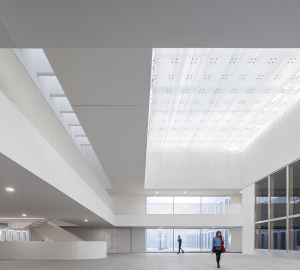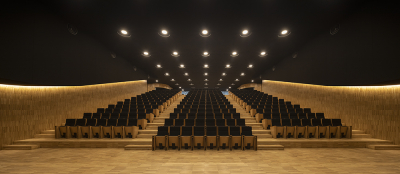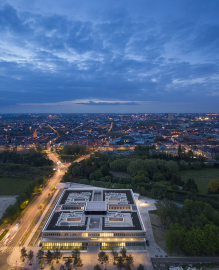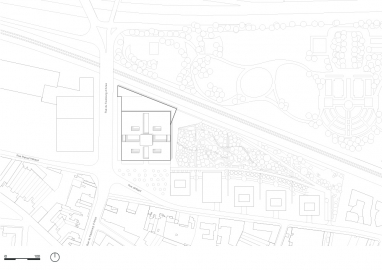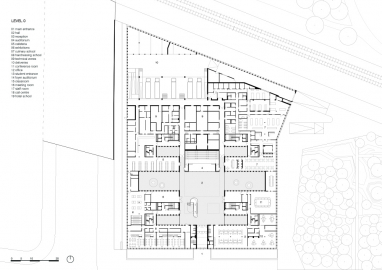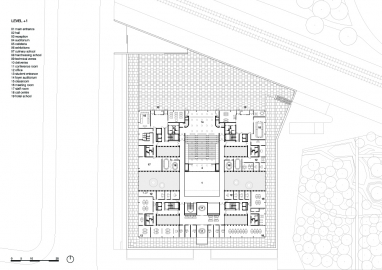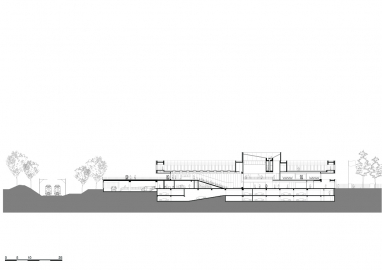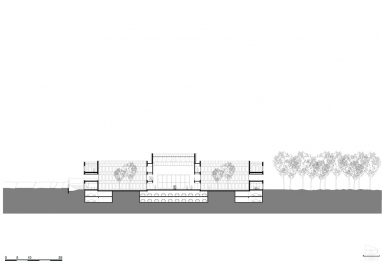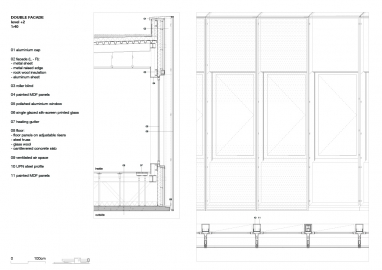Chamber of Trades and Crafts
For over 30 years, the city of Lille has undertaken territorial requalification through major economic development. Eurartisanat is one of the new poles in which the Chamber of Trades and Crafts constitutes a new identity for this area in southern Lille. This public building, beyond the programs it offers, holds a certain position within the community.
The Chamber of Trades and Crafts is set along the edge of the former Seventeenth century Vauban fortification, now replaced by a high-speed ring road. The northern border of the site is defined by a railway line and the Lille botanical garden.
To the south, Rue Abélard defines the perimeter of a wider master plan area comprising of Eurartisanat headquarters, five future buildings and a lush park spanning the site as an extension of the nearby garden.
This public building is complex mixed-use building featuring two public squares on different levels; each entrance serves the two main architectural realms: educational and administrative. On the ground floor is the new Place des Artisans, while a large terrace to the north of the first floor aligns the project with the Rue du Faubourg d’Arras and connects it to a bridge towards the centre of Lille.
Symmetrically, the Chamber of Trades and Crafts is organised around six patios that provide natural light for the circulation spaces and divide the building into four clusters spanning through the three levels. Functions vary from local and regional administration to research and educational facilities (hairdressing school, cooking school, laboratories, classrooms, auditorium). The new building acts as a hub for both the Chamber and the associated training schools, previously scattered throughout the historic city centre of Lille.
The building spreads over three floors rising from a square shaped footprint of 80 by 80 meters. Each floor holds a strong connection to the green landscape: on the first floor a prominent cantilever frames a scenic view of Lille and the gardens.
With its minimalist aesthetics and elegant transparency, the monolithic building provides an embracing and protective gesture towards the surrounding nature reinforcing the dialogue between architecture and landscape.
In order to dialogue with the urban fabric and the surrounding landscape, great attention was paid to ensure the use of natural materials: glass and stone. The ground and second floors use a modular double glass facade that ensures climate and acoustic control. Spanning the full floor height, each module features an inner polished aluminium window that can be opened as well as a fixed outer glass panel with reflective print that gradually blends to create a fully transparent zone at eye level whilst blending the building into nature.
The patio façades feature large aluminium window frames and are clad in Vals Quartzite, a solid, compact and frost-resistant stone. The same stone is used on the patio floors as well as in the main hall to reinforce the link between exterior and interior.
Through its solid materiality, Eurartisanat aims to articulate, absorb and reflect the surrounding landscape whilst simultaneously standing out as a new iconic element dedicated to the public sphere


